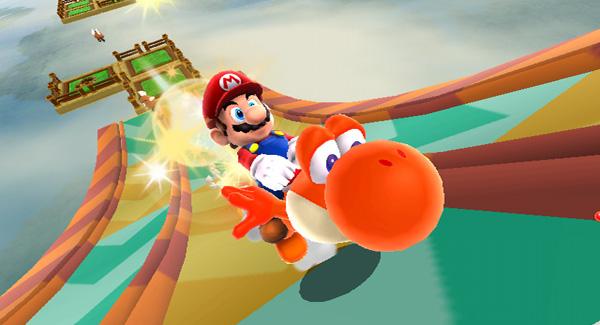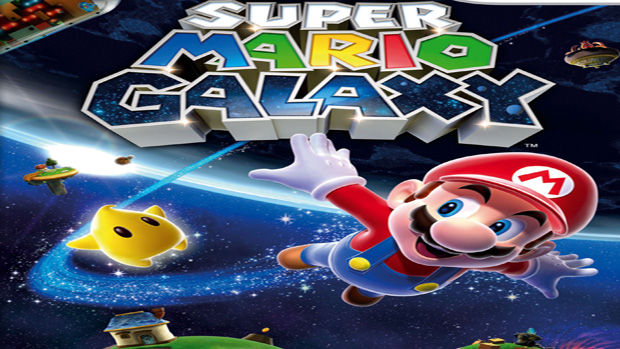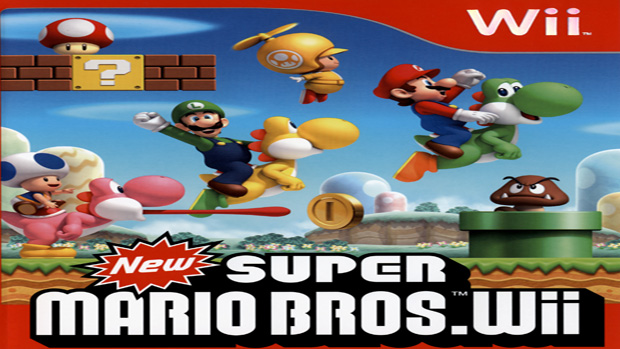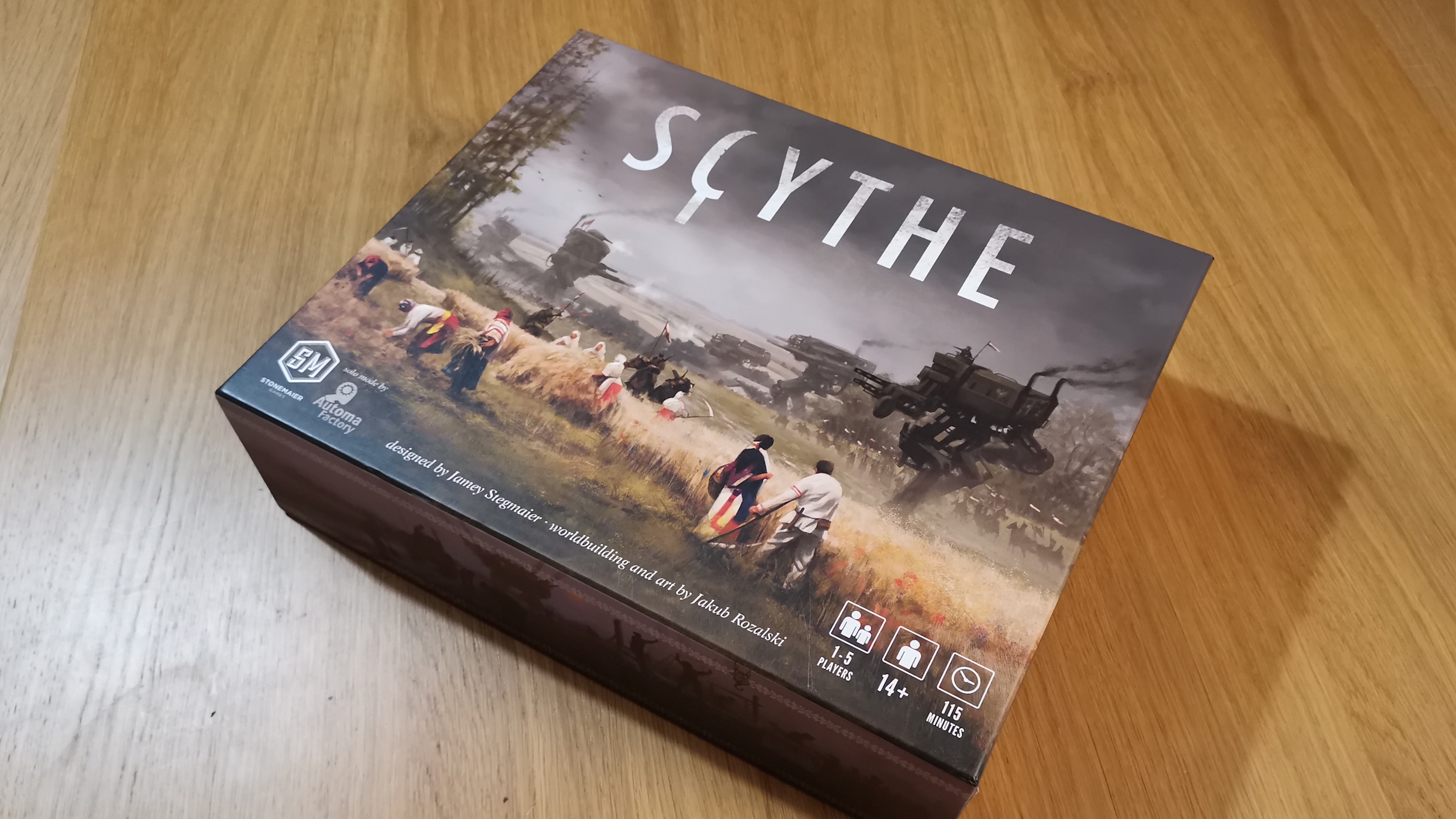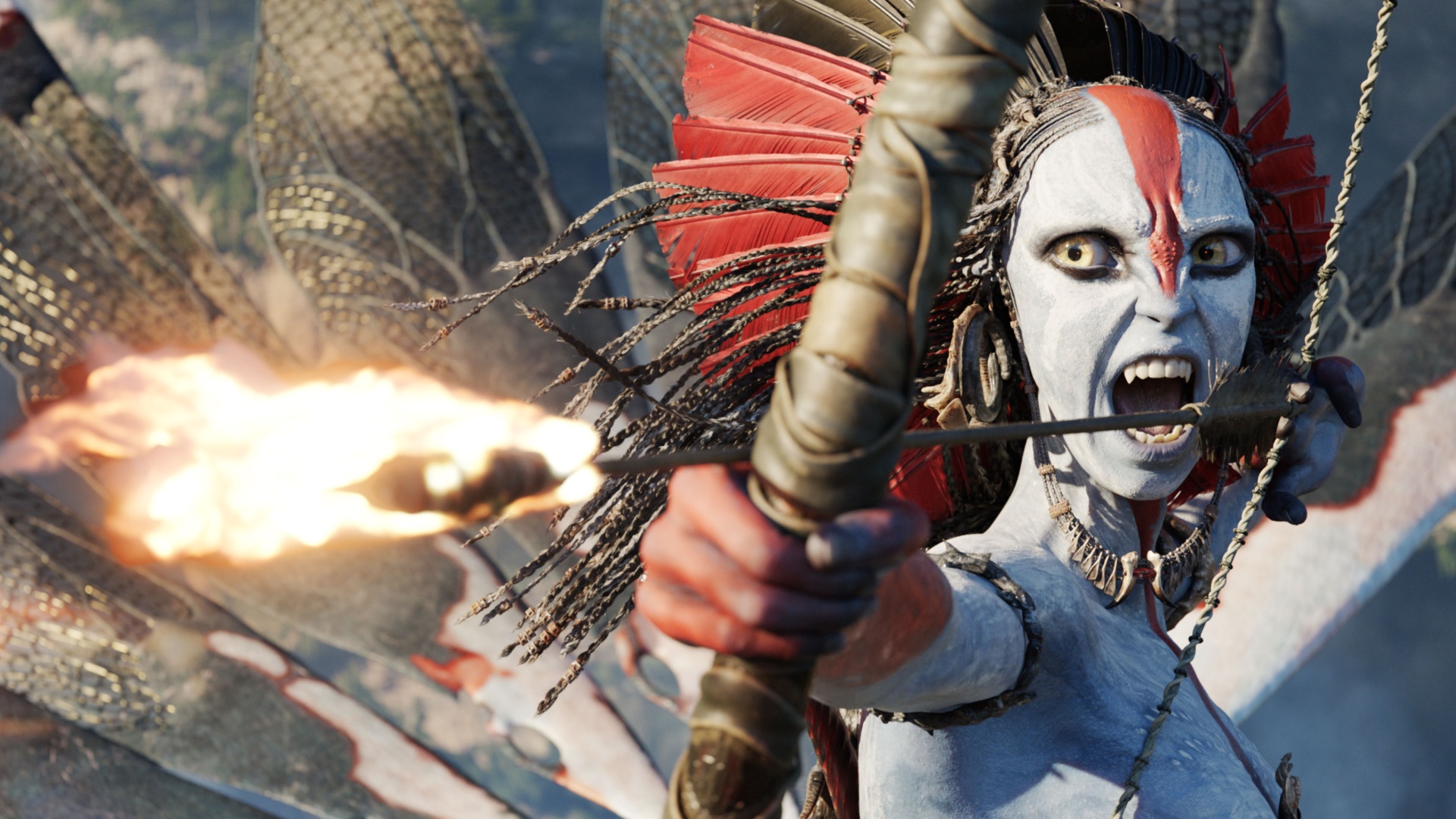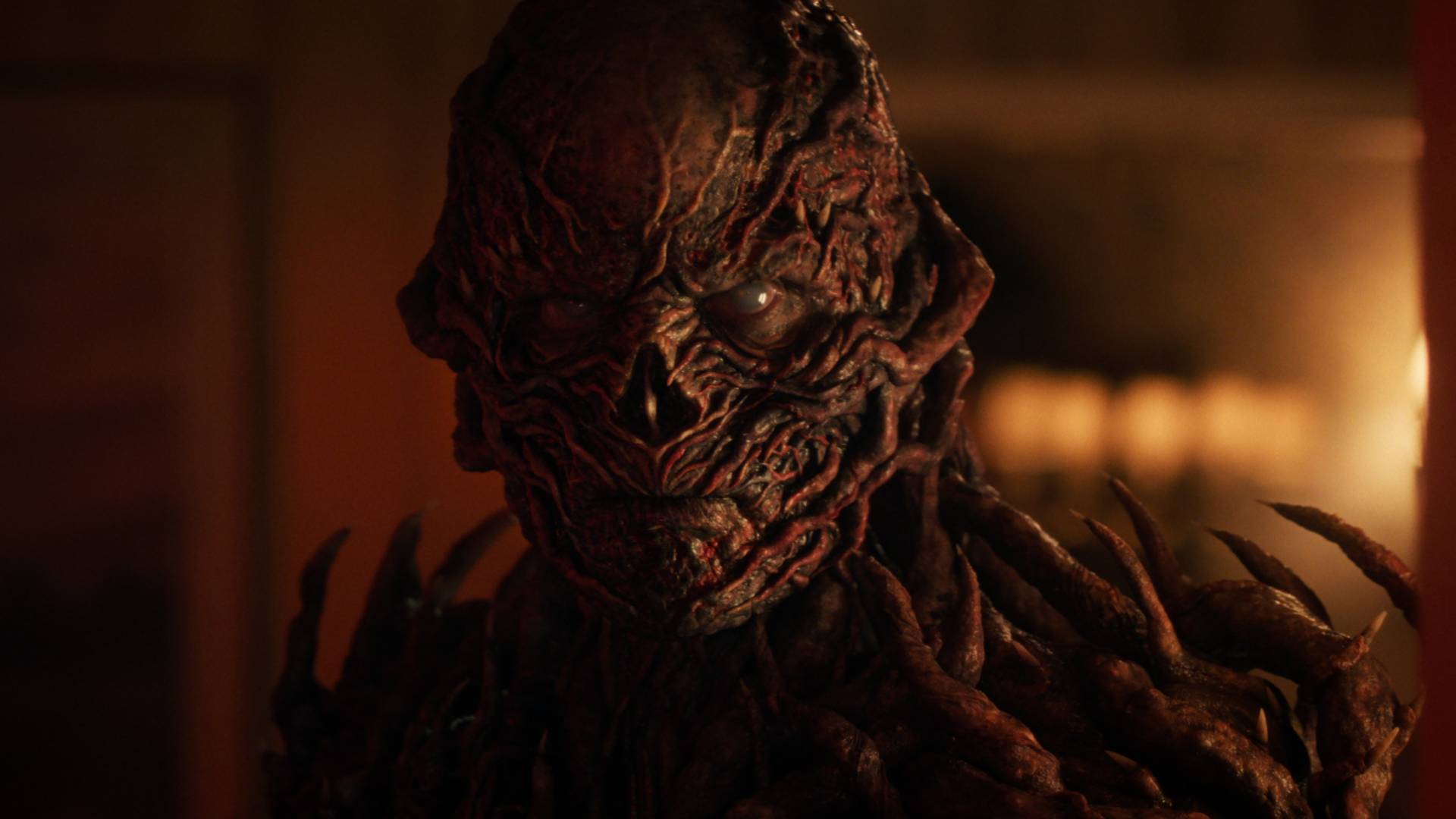GamesRadar+ Verdict
Pros
- +
More of Mario's particular brand of magic
- +
Tons of neat new tricks
- +
power-ups and techniques
- +
Some great references to previous Mario games
Cons
- -
Dealing with the general imperfections of a 3D camera
- -
Some really frustrating levels late in the game
- -
Can't Bowser do something new?
The Wii is a joke, or at least that’s how it often feels. In the past, we’ve gotten lots of mileage out of mocking the system and its mega-hits, like Wii Play, Game Party and (sigh) Just Dance. We still turn on our Wiis every now and then, mostly just to play the rare “real” games that get put on disc or come to WiiWare, like Cave Story did. But give us more Mario Galaxy and we hurriedly dust off the white wonder, install new batteries and get to waggling, no questions asked, as all the cynicism and bad feelings wash away.
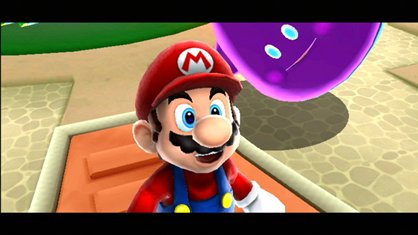
And why not? The first Galaxy has remained the best game for the system in the two-and-a-half years since its release. Once Super Mario Galaxy 2 was announced, we were filled with high hopes that at least something would be coming to the system that could keep up with competition, instead of merely side-stepping it with casual hits and exercise plans. But is Galaxy 2 what we hoped for? Or is it just microwaved leftovers from the brilliant first outing?
This isn’t Mario Galaxy 1.5 (mostly)
After it was announced, some critics condescendingly referred to Galaxy 2 as “Galaxy 1.5,” and it didn’t help when Mario creator Shigeru Miyamoto said it was once called it that internally as well. But even if it was initially planned as a mere update to the original, it’s become so much more that the 1.5 label no longer fits. But maybe 2 isn’t quite the correct title either. Maybe it should’ve been “Episodes from Mario Galaxy,” as it feels more like a new, alternate take on a near-perfect original than what we’d normally define as a sequel.
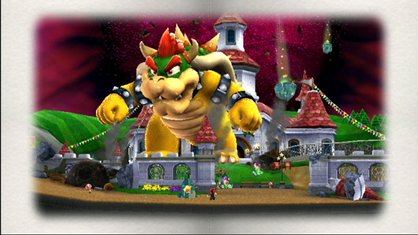
We’d start with the story, but it’s of little consequence and you probably guessed the entire plotline the moment Nintendo announced the game. Believe it or not, Princess Peach is kidnapped by Bowser, and Mario must save her. We’d like to say it has some twist, but no. Although it is pretty interesting that the game doesn’t recognize the events of the first Galaxy; Mario meets the Lumas, Star Bunnies and the rest for the first time, again, while the Lumas’ “Mama,” Rosalina, is nowhere to be seen. That’s mostly due to the elimination of a traditional hub world, which has been replaced with Starship Mario, a smaller environment that traverses the galaxies similarly to how you used the overworld map in Super Mario World or Mario 3. And that’s just the beginning of Galaxy 2’s many fun and familiar additions.
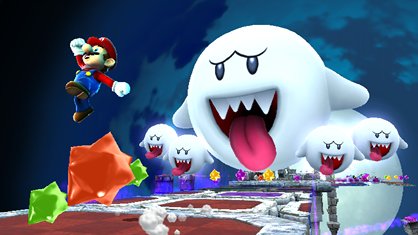
The game begins a little slowly, with an all-2D intro (probably to ease in those more familiar with New Super Mario Bros Wii), but it very quickly finishes the warm-up and starts hitting players with more challenging tasks sooner than the original did. For those pretty well-versed in Galaxy and 3D Mario navigation in general, it will fit like one of Mario’s gloves, but for the unlucky few who are unfamiliar, its devilishly simple controls will still be easy to understand. And if you’re really confused for some strange reason, there are entirely optional video tutorials in many of the early levels, as well as the return of the divisive Super Guide from NSMBW, which can more or less play sections of the game for you if it gets too hard (although it’s equally optional, and appears only sporadically).
The structure of the original is maintained as well, though the sequel comes with some nice updates, too. You still head to a galaxy, decide what star you’re going after and then follow that path over several planetoids, all of which are packed with secrets for you to discover. That’s still marvelously enjoyable, and it happens across more worlds than before, with Galaxy 2 boasting nearly 50, compared to the first game’s near-40.
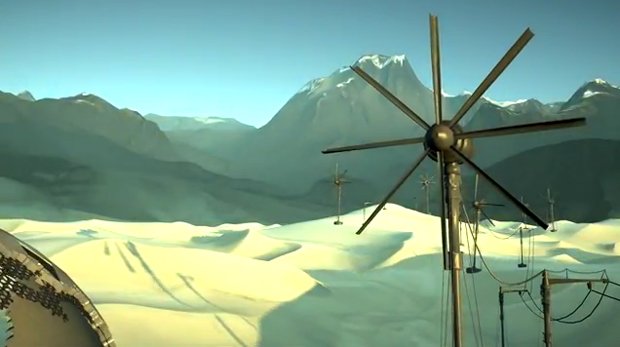
Its close adherence to the first game’s structure is why the title 1.5 could almost fit, but Galaxy 2 boasts too many new ideas to be given such a backhanded compliment. Even if the core mechanics are all the same (which isn’t completely true), their implementation is different enough to make the experience new, like the alternate take it is. Since Galaxy 1 did so very little wrong, keeping some of the old stuff is to be expected, but the fresh aspects of it work great, too, if not better than what they replace.
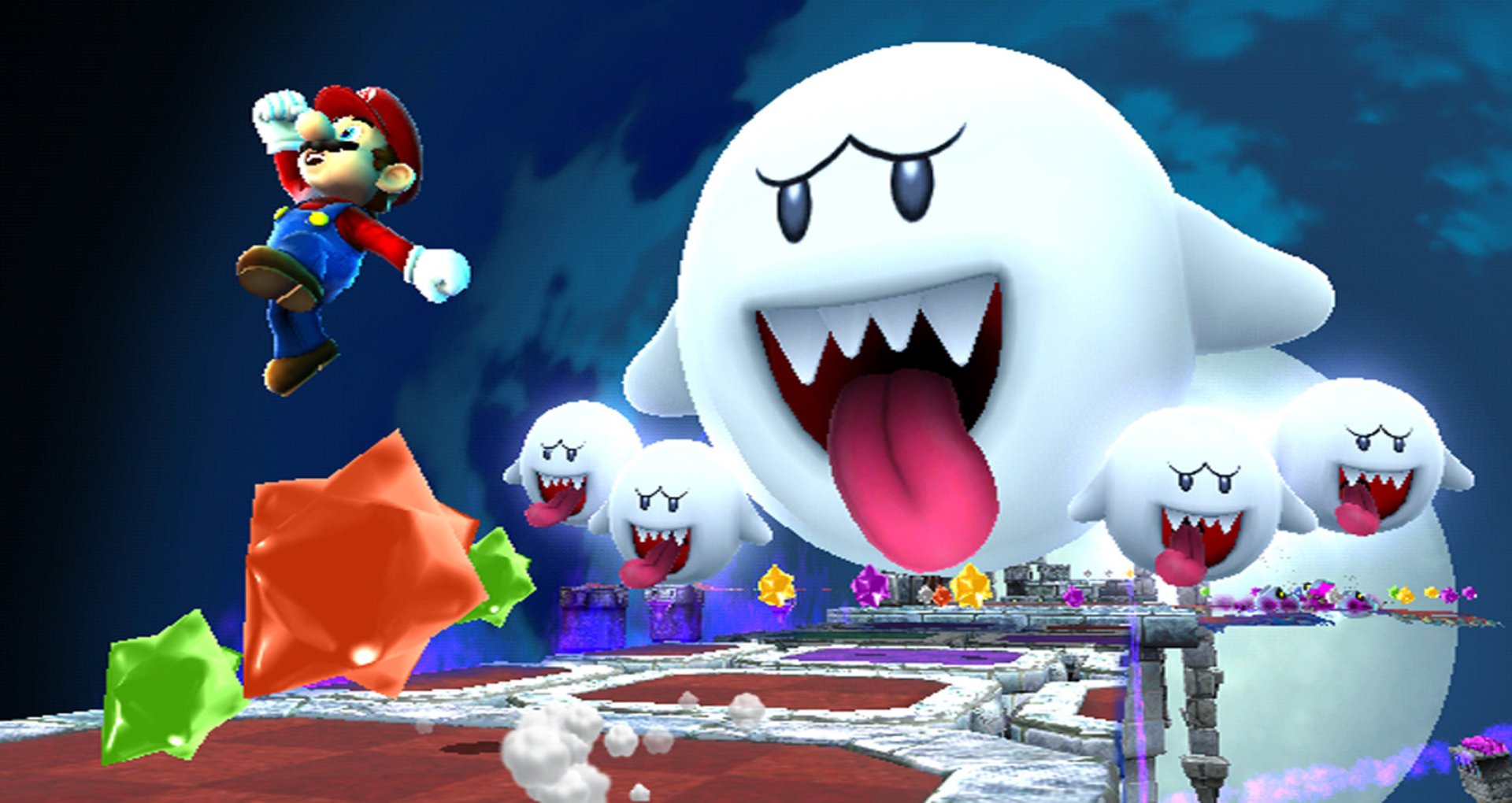
An abundance of ideas
So yes, it’s more than a little similar to first game, at least on the surface. But spend only a few minutes with Galaxy 2 (which is hard, given how addicting it can be), and you’ll see enough new ideas and concepts to easily lay to rest any concerns that it’s too stylistically similar. Perhaps the developers felt they needed to prove their critics wrong by overloading the game with so many new things (but never so many that it overwhelms the player).
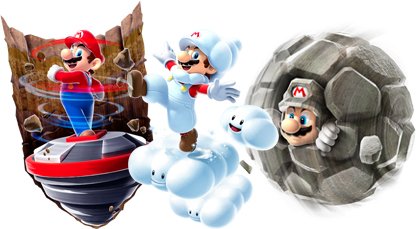
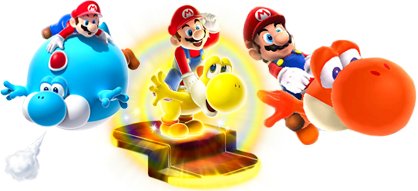
Let’s start with the power-ups. We’ve detailed them pretty heavily already, but here’s a refresher: New power-ups like Cloud, Drill and Rock Mario all add incredibly inventive new approaches to standard level setups, whether it’s in making new cloud platforms to climb higher, or knocking down enemies as you barrel at them inside a giant rock. All are taken full advantage of throughout the many levels they appear in, along with all the previous power-ups that return, but are often used in new ways (such as Fire Mario’s assaults on snow sculptures of Bowser). But the new powers get much more time devoted to them, and deservedly so.
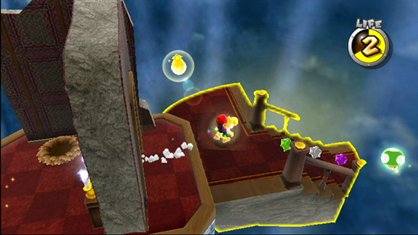
Yoshi is also well utilized, which we really appreciated after his half-hearted appearance in NSMBW. He’s integral to enjoying the numerous galaxies he appears in, and his role has expanded with the introduction of power-ups, such as Light and Blimp Yoshi. And just as Mario’s abilities get used in expansive and varied ways that still feel natural, the same can be said for Yoshi, as he finally returns to deserved prominence in a core Mario title.
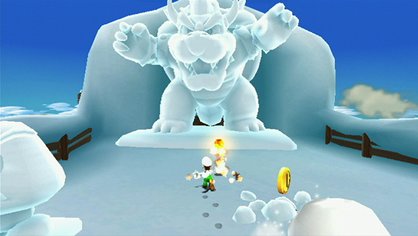
Above: And Luigi is playable basically from the start
But those are just the most obvious examples. Seemingly every level has some new trick to it, with only a few old, familiar dynamics returning, like balancing on top of a sphere containing a star. These ideas are normally just exclusive to just one or two levels, like Mario hurling himself from bar to bar like a gymnast, rolling giant snowballs or gliding with a bird that looks fairly similar to the Pokemon Ho-oh. Same goes for the boss fights, which (outside of the first one) are totally new and are all fun. We don’t want to go into too much detail, as Nintendo and others have already given away too much about what makes this title special, but even without the immediate surprise of seeing some new aspect of SMG2, you’ll still be shocked by how well so many new ideas can work.
Why can’t all Wii games look and sound this good?
Seriously, this game looks amazing. Just like Galaxy 1, much of this game looks great even when compared to the average 360 title, only they’ve improved the graphics even more. Sure, if you were actively and exhaustively searching for some flaw you could point at and whine, “this texture doesn’t look next-gen,” then fine, you win. But Galaxy 2 so fully understands how to get the most out of aging technology that nearly all graphical flaws are smoothed over or covered up, leaving you with Wii’s best-looking title to date.
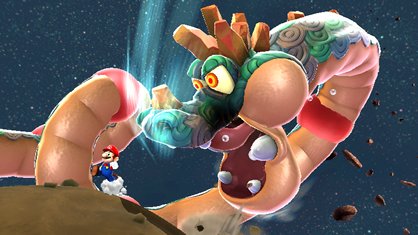
The soundtrack also ramps up from the previous game’s excellence. Not only is the music all orchestral, giving a real epic and grandiose feel to new and returning tracks alike, but when it remixes classic melodies from Super Mario 64 or Sunshine, they’re given new impact and gravitas. Like all game soundtracks should, this further enhanced a superb experience, even for a reviewer who normally doesn’t notice background music all that much.
Why Mario Galaxy 2 is a 10
Ultimately, we had had one of the finest times in a long time playing this game, and when compared to other Wii games – even great ones, like Muramasa or A Boy and His Blob – Super Mario Galaxy 2 is hands-down the greatest the Wii has seen since, well, Galaxy 1. But can something that even we admit is nearly a remix really garner our highest score? Yes, and here’s why.
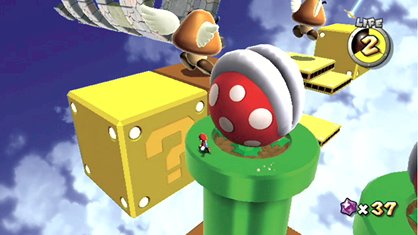
Like we said earlier, it always either fixes the limited number of flaws the first game had, or just takes interesting new approaches to much of what worked, while still being a game that stands on its own. You may notice that until now we’ve had few complaints, and that’s simply because there are so few things to complain about. The final worlds and some stars that are all completely unnecessary to finish the game can get pretty frustrating for non-Mario savants, but those areas are just gravy anyway. In a long weekend of play, we got 90-plus stars out of 120, and while we are pretty familiar with Mario, we’re by no means perfect players; there’s just the right balance of challenge in all but the later worlds (which are made for the super-skilled, anyway). Also, very rarely, the camera can be slightly tricky, but it still sets the bar very high for all other 3D games. Sorry, haters, that’s all the negative we’ve got.
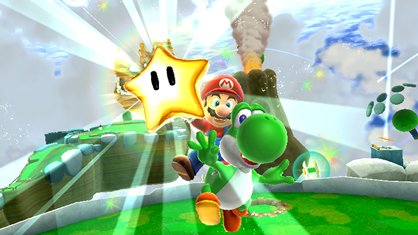
Even if you discount the relative ghetto of middling games on the Wii, Galaxy 2 is one of the year’s top games on any system, and one of the few must-have reasons to buy a Wii… outside of weight loss and bowling, that is.
May 21, 2010
Super Mario Galaxy? Yes, but barely.
It feels newer and more varied, though it isn’t the revolution the first game was. If you just bought a Wii and have to pick one or the other, play SMG2 first, since it’s slightly more inviting and fast-paced than the original. Once you’ve wrapped up 2, by all means go back to first one. Following that, leave your Wii unused for the majority of your year like everyone else, making sure to dust occasionally.
New Super Mario Bros Wii? For the love of God, yes!
Maybe NSMBW’s lack of creativity compared to Galaxy 2 makes the latter look even better next to it, but there’s really no contest. NSMBW is a good game, but we expected so much more from the first new 2D, console-based Mario in almost two decades that we were understandably disappointed by how few new things it tried, outside of an underwhelming multiplayer aspect. Oppositely, Galaxy 2 really pushed itself to outperform expectations, not just meet them exactly.
Ratchet and Clank Future: A Crack in Time? Yes, but it’s closer than you’d think.
And if you lack Nintendo-tinted glasses, the gap gets even closer. R&C games are always fun, and Crack is a step up, graphics-wise, compared to SMG2. But the annual releases of Ratchet games makes them feel less special, and we’re getting a little franchise fatigue. Meanwhile, a second core Mario game for the Wii, delivered nearly three years after the last one, feels like a real treat.
More info
| Genre | Action |
| Description | Expanding on the original's brilliance, this ingenious platformer only gets better by embracing the Wii's limited capabilities and adds so many ideas, big and small, that we can't help but love it. Even if you (mistakenly) believe it's too similar to the first game, what's wrong with more of an incredibly great thing? |
| Franchise name | Mario |
| UK franchise name | Mario |
| Platform | "Wii" |
| US censor rating | "Everyone" |
| UK censor rating | "3+" |
| Release date | 1 January 1970 (US), 1 January 1970 (UK) |

Henry Gilbert is a former GamesRadar+ Editor, having spent seven years at the site helping to navigate our readers through the PS3 and Xbox 360 generation. Henry is now following another passion of his besides video games, working as the producer and podcast cohost of the popular Talking Simpsons and What a Cartoon podcasts.
